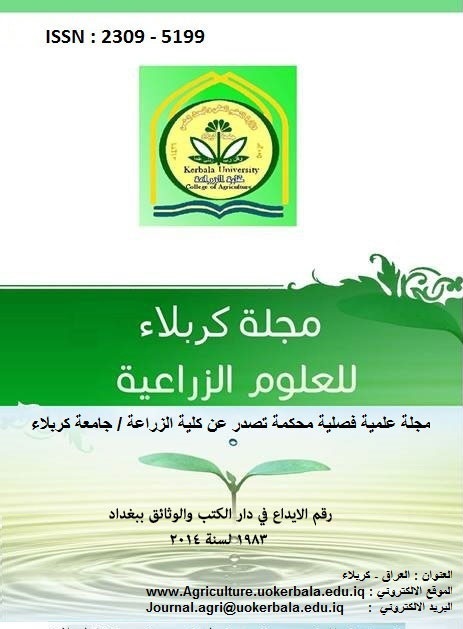Effect of Adding Different Levels of ( Citric acid and Malice acid and Oxalic acid and their mixture) to Diet on productive performance of broiler.
DOI:
https://doi.org/10.59658/jkas.v4i1.90Abstract
Experiment was conducted in a poultry station affiliated the holy Karbala agriculture directorate for the period from 10/31/2015 to 12.12.2015 used in 900 chick meat breed of Rose - 308. The study included adding two different levels of each of the individually organic acids and synergistic and at different concentrations the to see their impact on performance and productivity them. the chicks were distributed randomly on nine treatments by 100 chicks each treatment and chicks divided randomly into four replications (25 chicks each repeater).
First treatment T1 as control group with out any additive, Second treatment T2 adding of Citric acid 0.75 g / kg diet, Treatment T3 adding of Citric acid 1.5 g / kg diet, Fourth T4 treatment adding of Maleic acid 0.75 g / kg diet, Fifth treatment T5 adding of Maleic acid 1.5 g / kg diet, Sixth treatment T6 adding of Oxalic acid 0.75 g /kg diet, Seventh treatment T7 adding of Oxalic acid. 1.5 g / kg diet, Eighth treatment T8 adding of Citric acid 0.25 g + Maleic acid 0.25 g + Oxalic acid 0 .25 g / kg diet and Ninth treatment T9 adding of Citric acid 0.5 g +Maleic acid 0.5 g + Oxalic acid 0.5 g / kg diet.
The results of the experiment to the following:
The results of the experiment that the birds of the sixth treatment with added Oxalic acid concentration of 0.75 g / kg feed has outperformed significantly (p <0.01) on the rest of the transactions in the body weight at the sixth week of age and reached 2708 g in the rate of weight gain cumulative 2581.75 g and the rate of the total feed consumption 4475.25 g for all other transactions.
There was no significant difference in the proportion of total mortality for all the various treatment, including the control treatment because mortality ratios are below the normal level in all treatments .
Downloads
Published
How to Cite
Issue
Section
License
Copyright (c) 2017 Copyright (c) 2024 is the Author's article. Published by the Journal of Kerbala for Agricultural Sciences under a CC BY 4.0 license

This work is licensed under a Creative Commons Attribution 4.0 International License.
Licensing Terms
All articles are published under a Creative Commons License and will be directed to the Creative Commons Attribution 4.0 International License (CC BY 4.0) That permits use, distribution, and reproduction in any medium, provided the original work is properly cited. This license also allows the work to be used for commercial purposes.
Use by both non-commercial and commercial users
This content is licensed under a Creative Commons Attribution 4.0 International (CC BY 4.0) license, permitting use by both non-commercial and commercial users. Individual users may access, download, copy, display, and redistribute the articles to colleagues, as well as adapt, translate, and text- and data-mine the content, subject to the following conditions:
- The author's moral rights, including the right of attribution and the right to protect their work from derogatory treatment, are respected.
- Where content in the article is identified as belonging to a third party, users must ensure that any reuse complies with the copyright policies of the owner of that content.
- If the article content is reused for research or educational purposes, users should maintain a link to the appropriate bibliographic citation, including the DOI and a link to the published version on the journal's website.

